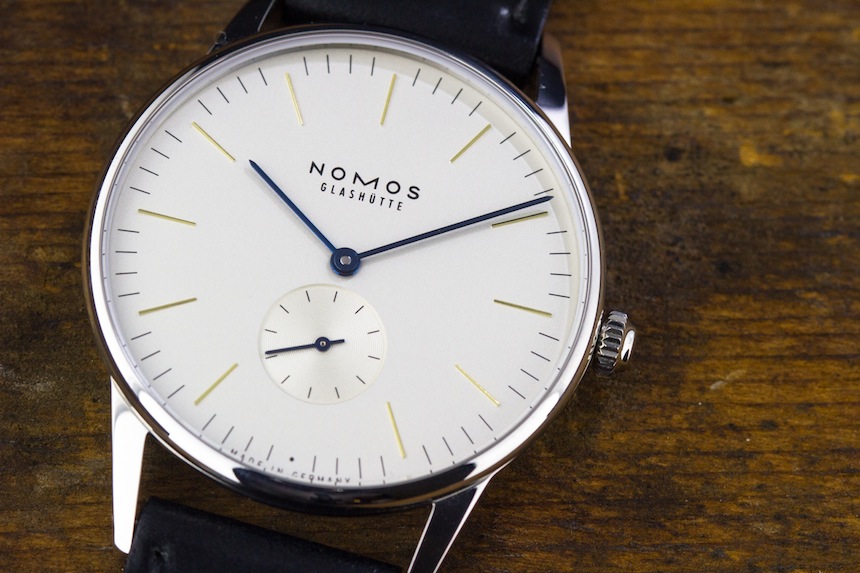
As a dyed-in-the-wool sport watch guy, I always have some trouble with dress watches. I’ve reviewed a handful in my time and while many were great watches, I never feared the moment when a dressy piece would be returned to its owner and I would go back to my personal collection of brutish divers and tough-boy pilots. That changed when I got a chance to see a variety of Nomos watches earlier this year at Baselworld. While the new Ahoi is certainly a stunner, the 38 mm versions of Nomos’ standard line, the Tangente, Ludwig and the Orion, felt like a good fit for not only my wrist – but also my specific needs for a dressy watch. In the months following Baselworld, I found that the Orion, and Nomos in general, became the subject of a great many online searches. When Nomos proved willing to send an Orion, I was happy to have a chance for a closer look at this modest and beautiful German watch.
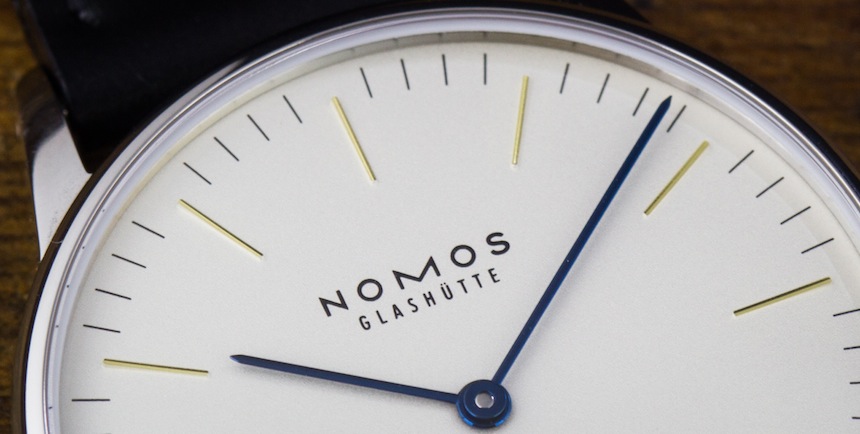
First, a quick history lesson for those not all that familiar with Nomos’ watches. Nomos is based in Dresden in the Glashutte area of Germany and has been designing and manufacturing watches since 1990, when three employees and a single phone line (shared with a local restaurant) came together shortly after the fall of the Berlin Wall.
Their original line was comprised of the Tangente, Tetra, Ludwig and the Orion, all of which are still in production today. By 2005, Nomos had 60 employees and had designed their own in-house automatic movement for their Tangomat model. Since then they have launched a series of new models including the Club Sport line and a range of models sporting GMT complications. As mentioned above, 2013 saw the introduction of a new model in the Ahoi, as well as the gold Lux and Lambda models, and new sizing for much of their original lineup.
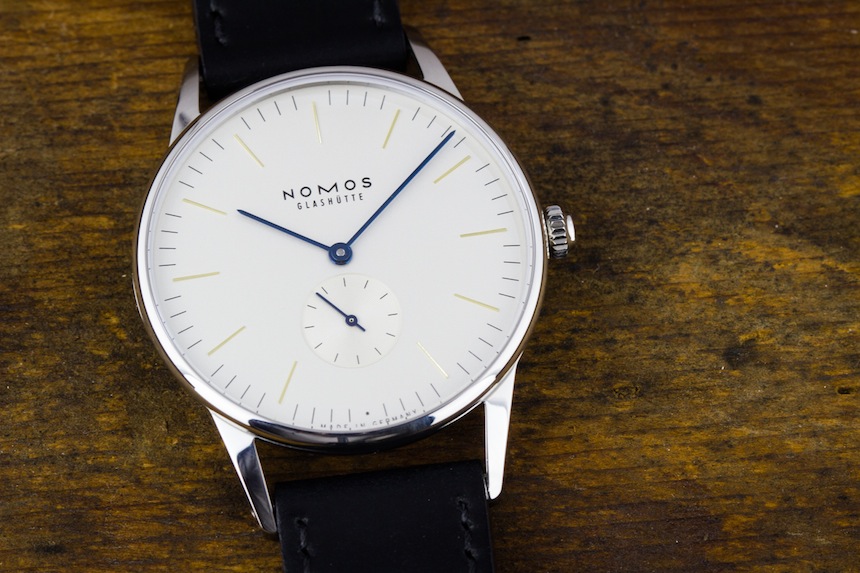
The Orion was previously available in 33 and 35mm versions and I think the 38mm sizing is a perfect addition for those who might want a more modern expression of a design that was just about perfect when it debuted some 20 years ago. The Orion’s sparse and simple dial layout is accented only by the presence of a seconds sub dial and, should you desire, a date window at six is also available for the new 38 mm model. While Nomos’ method of incorporating a date window is one of my favourites and I believe quite successful on a model like the Tangente 38 Datum, for the Orion I would go stag. While I feel that the date equipped model looks great and might be more practical, I think the no-date version best exemplifies the Orion design.
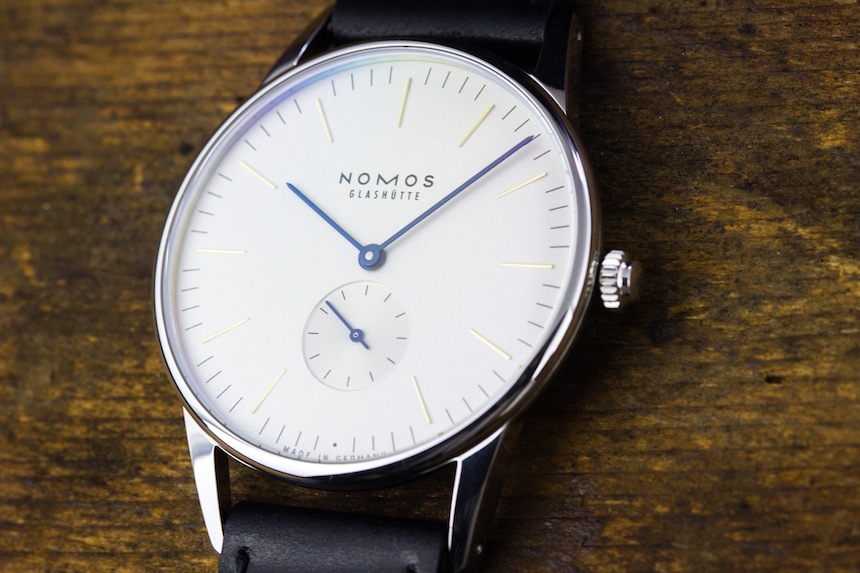
While the Orion can be had with a handful of dial colours, we’ll stick to the 38mm version which can be had in grey with rhodium plated hands and markers (called the Orion 38 Grau), a silver dial with rhodium plated hands and markers with a date (the Orion Datum Weiss), or the silver dial with gold markers and blued steel hands as seen here (with or without a date). For me, the Orion 38 reference 384 is the one to have. The gold markers are visually quite interesting and I love the blued steel hands and the incredible contrast they provide for legibility of the time display.
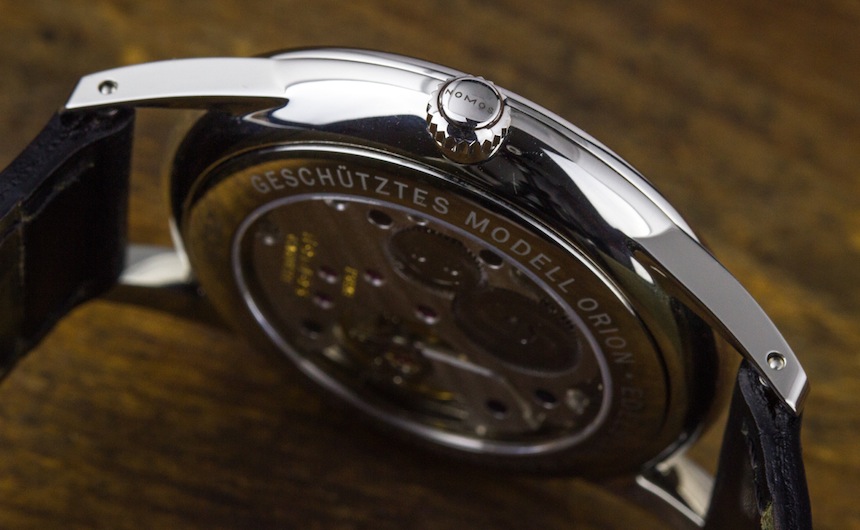
Having covered the width, the Orion is just 8.8mm thick and measures 48mm lug to lug thanks to its elegantly elongated and curved lugs. The lugs are 19mm wide but easily accepted a snug 20mm strap and changes are a breeze thanks to the rare inclusion of drilled lug holes. Winding and time setting are done via the small but grippy crown at three and both the front and back crystals are sapphire, with the former exhibiting a slight dome. Thanks to a design that maximizes the dial and the lug length, the Orion wears much larger than you might expect. I have 7 inch wrists and eyes that are used to seeing 42+ mm watches on my wrist, but the Orion feels just right and the sub-40mm sizing keeps the Orion from feeling trendy or too big for its design. You get the impression that 38mm was not simply selected on a whim, but rather that the new sizing for some of their most well-known watches was the subject of a great deal of consideration and planning. Nomos watches stick so closely to their insular sense of style and design that they often seem to exist outside of trends or fashion.
